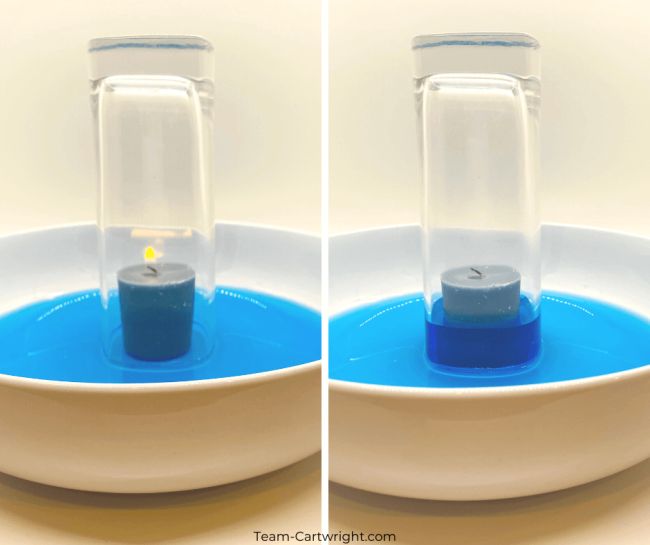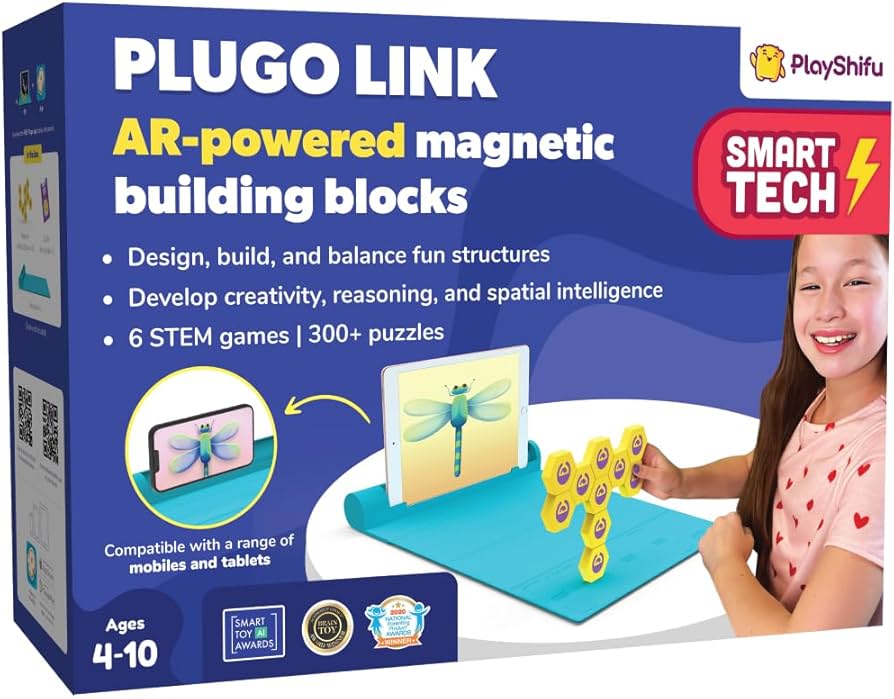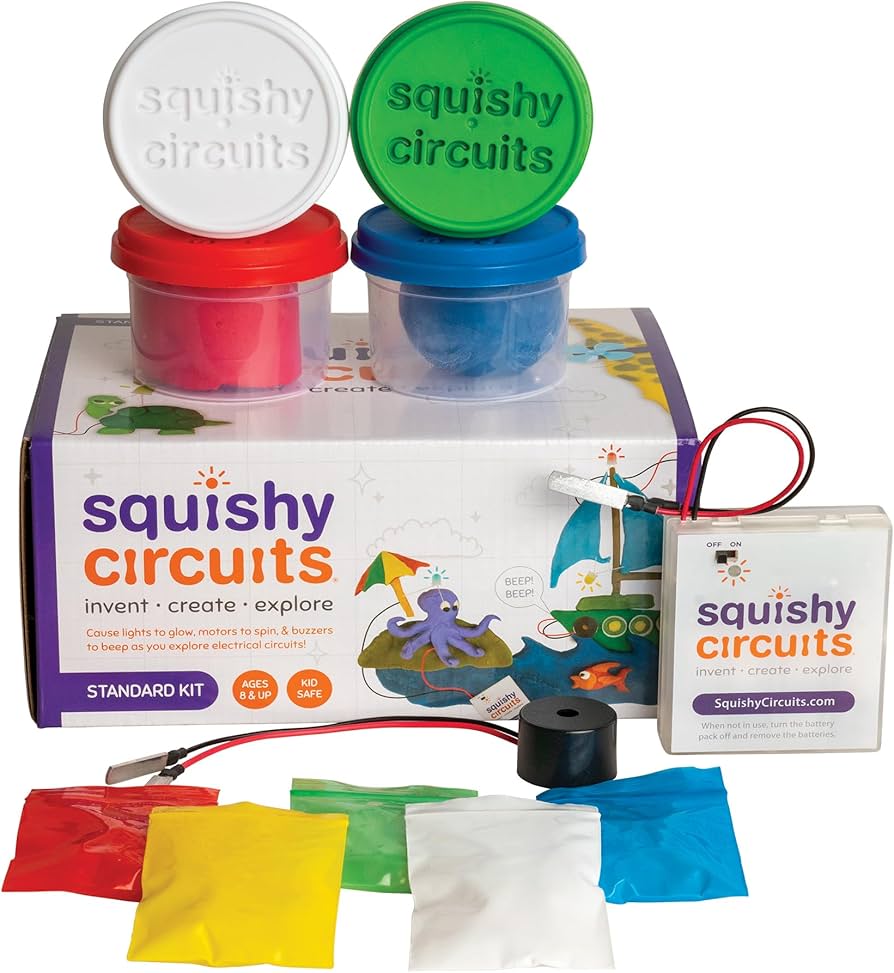Conclusion & Learn More
Science experiments are a fun way to learn! Tends to be more engaging and active (i.e., through the process of extracting and logical learning). Let us conclude with takeaways and inspire discovery.
Summarizing The Fun
Here are some fun, easy, and fast science experiments that are perfect for helping you learn. The science concept is different for each experiment. From building a simple volcano to creating invisible ink, the activities mix fun and learning. They’re easy to put together and use common household items. A great way to inspire curiosity and a love of science.
Classroom Validation and Continuous Learning
Science is such a broad topic with endless frontiers. Get motivated to learn more by going through more experiments. Go to your local library or see what you can find online. Ask questions and demand answers. Try different materials and techniques. This maintains excitement and adds layers of understanding.
Keep in mind that having fun while learning is the objective. Each experiment takes us one step closer to a better understanding. Just keep testing, keep learning, and have fun with it.

Credit: www.noguiltmom.com
Frequently Asked Questions (FAQs)
What are easy science experiments at home?
The baking soda and vinegar volcano eruption is a classic experiment. You could also try making a rainbow using a glass of water and sunlight.
How do you make a homemade lava lamp?
The easy lava lamp can be made by filling a bottle with water, adding oil, and then dropping a few drops of food coloring in it. After all that is done, dropping the Alka-Seltzer will create the lava effect.
Can kids make a safe science experiment?
Yes, most of the science experiments are safe for kids. Ensure there is supervision and the use of common household items like baking soda, vinegar, and a few drops of food coloring.
What materials are needed for a simple experiment?
The essential materials to have included baking soda, vinegar, food coloring, water, and oil, plus other home products such as bottles and glasses.
Conclusion
As seen, science experiments can be easier and fun at the same time when more sciencing is invented. The simple, easy, and fast experiments are ideal for kids, and they can learn a lot from them. The experiments also bring about much curiosity for a child; hence no possibilities to hate science. The experiments can be done right at home or in school, especially considering those experiments that one can almost get at home. One can see their kids getting more curious by the day and having fun with the easy and fun experiments. Let them have more reasons to appreciate science through simple experiments.
Enjoy learning modern, simple experiments and fun science with kids.
You Might Also Like:
- Science Project Ideas: Unleash Your Inner Scientist
- Fun Science Activities for Kindergarten: Exciting Hands-On Experiments
- Science Projects for Preschoolers: Fun and Educational Ideas
Science experiments can be fun and educational. They don’t have to be complex or time-consuming.
Many easy and fast science experiments exist that you can do at home or in the classroom. These experiments use simple materials and take only a few minutes to set up. They help kids and adults understand basic scientific concepts.
From making a volcano with baking soda and vinegar to creating a simple circuit, these activities are engaging and informative. They spark curiosity and make learning science enjoyable. Whether you are a teacher, parent, or student, these quick experiments will bring excitement to your science studies. Get ready to explore and discover with these easy and fast science experiments!
Introduction To Quick Science Experiments
Quick science experiments are a great way to learn. They are simple and fun. You can do them at home or in class. With a few materials, you can explore science. These experiments do not take much time. You can see results fast. This makes learning exciting. You will be amazed at what you can discover.
Benefits Of Fast Experiments
Fast experiments save time. You do not have to wait long. This keeps students interested. They also use easy-to-find materials. You can gather everything quickly. These experiments are perfect for busy schedules. They fit into short periods of free time. You can learn a lot without spending much time.
Materials Needed
You will need basic items. Things like water, vinegar, and baking soda. Also, you may use food coloring, balloons, and paper. These items are usually at home. If not, they are easy to find at a store. You do not need special tools. Simple household items work best.

Credit: sciencekiddo.com
Simple Chemistry Projects
Simple chemistry projects provide a fun way to learn about science. These experiments are easy to set up and use common household items. They are perfect for kids and adults alike. Let’s explore two exciting projects: the Baking Soda and Vinegar Volcano and the Magic Milk Experiment.
Baking Soda And Vinegar Volcano
The Baking Soda and Vinegar Volcano is a classic science experiment. It demonstrates a chemical reaction between an acid and a base. You will need baking soda, vinegar, dish soap, and food coloring.
First, build your volcano using clay or a bottle. Place the volcano on a tray to catch any spills. Add a few spoonfuls of baking soda to the volcano. Next, add a few drops of dish soap and food coloring.
Now, pour vinegar into the volcano. Watch as it bubbles and erupts like a real volcano! The reaction between baking soda and vinegar creates carbon dioxide gas. This gas causes the eruption, making it look like lava.
Magic Milk Experiment
The Magic Milk Experiment is another fun and colorful project. It shows how soap interacts with fat in milk. You will need milk, food coloring, and dish soap.
Pour some milk into a shallow dish. Add drops of different food colors to the milk. Do not mix the colors. Next, dip a cotton swab into dish soap.
Touch the soapy swab to the surface of the milk. Watch as the colors swirl and dance! The soap breaks down the fat in the milk. This action causes the colors to move and create beautiful patterns.
Easy Physics Experiments
Physics can be fun and educational at the same time. With simple materials, you can create amazing experiments that demonstrate fundamental principles. These easy physics experiments are perfect for kids and beginners. They help you understand basic concepts in a hands-on way.
Balloon Rocket
The Balloon Rocket experiment is a great way to learn about Newton’s Third Law of Motion. You only need a few items to get started.
Materials:
- Balloon
- String
- Straw
- Tape
Steps:
- Thread the string through the straw.
- Secure one end of the string to a fixed point.
- Stretch the string tight and secure the other end.
- Blow up the balloon but do not tie it.
- Tape the balloon to the straw.
- Release the balloon and watch it zoom along the string.
The balloon rocket demonstrates how the air escaping from the balloon creates thrust. This makes the balloon move in the opposite direction.
Homemade Compass
Creating a Homemade Compass is an easy way to explore magnetism. You can make one with simple household items.
Materials:
- Needle
- Magnet
- Piece of cork
- A small bowl of water
Steps:
- Rub the needle with the magnet for about a minute.
- Push the needle through the piece of cork.
- Place the cork and needle in the bowl of water.
- Watch as the needle aligns itself with the North-South direction.
The needle becomes magnetized, turning it into a simple compass. It aligns with Earth’s magnetic field, pointing north.
Fun Biology Projects
Learning science through fun biology projects is exciting and hands-on. These biology projects for kids and adults alike are a great way to dive into the wonders that biology has to offer. They are simple to source and quick to make. So, here we are going to explore a few interesting and yet simple biology experiments that are fun and keep you engaged.
Growing Crystals
How to Make Crystals With Household Items Crystal making is a fun experiment. When dissolved in a liquid, a crystalline substance will eventually form a saturated solution, and eventually, the solid particles will begin to aggregate and form a structure. Here’s a basic method for growing your own crystals:
- Supplies needed:
- Table salt or sugar
- Warm water
- String
- Jar
- Pencil
Steps:
- In warm water, dissolve as much salt or sugar as will allow.
- Add the solution to the jar.
- Attach the string to the pencil and drape the pencil over the jar, where the string hangs into the solution.
- Once the string is submerged in the solution, leave the jar untouched for a few days and watch the crystals grow on the string.
Watch the lovely crystal formations formed, and discuss how the particles aggregate to make these shapes.
Seed Germination In A Bag
A fun and educational project is seed germination. It gives you perspective on the first steps a plant takes toward going through its life cycle. It takes some typical supplies and very little time.
- Supplies needed:
- Plastic zipper bag
- Paper towels
- Water
- Seeds (beans work well)
- Marker
Steps:
- Dampen the paper towel and fold it to fit inside the plastic bag.
- Insert the seeds between the folded paper towel and the plastic bag.
- Seal the bag and use your marker to write the date on it.
- Set where it can get areas of sunlight.
- As the seeds will germinate, you can check them daily to watch the process unfold.
Observe the seeds as they sprout roots and shoots. Learn about the stages of seed germination and how plants grow.
Fun and Educational These Biology Projects provide an excellent opportunity to get outside and explore the natural world while learning in a hands-on fashion.
Quick Earth Science Activities
Engaging kids with earth science can be fun and educational. Quick earth science activities are perfect for curious minds. These activities are simple and require basic materials. Let’s explore some exciting earth science projects.
Diy Fossils
Create fossils at home with simple items. You need clay, small objects, and plaster. Press the object into the clay to make an impression. Mix plaster with water. Pour it into the clay mold. Let it dry completely. Remove the clay to reveal your fossil. This activity teaches about fossil formation. It’s a hands-on way to learn geology.
Mini Weather Station
Build a mini weather station to track weather patterns. Gather a thermometer, a barometer, and a rain gauge. Place them outside in a safe spot. Record the temperature, air pressure, and rainfall daily. Compare your data with local weather reports. This project helps us understand weather forecasting. It’s a fun way to learn meteorology.
Creative Engineering Challenges
Science experiments don’t always need to be complex. Creative engineering challenges offer a fun and hands-on way to learn. These projects use everyday materials. They encourage problem-solving and critical thinking. Here are two exciting and easy engineering challenges you can try at home or in the classroom.
Popsicle Stick Catapult
Building a popsicle stick catapult is a great way to explore physics. This simple project teaches about force, tension, and trajectory.
Materials needed:
- 10 popsicle sticks
- Rubber bands
- A small plastic spoon
- Pom-poms or small marshmallows
Steps:
- Stack 8 popsicle sticks and bind them with rubber bands at each end.
- Take the remaining 2 sticks and bind them together at one end.
- Place the stack of 8 sticks between the two bound sticks.
- Attach the spoon to the top stick using a rubber band.
- Place a pom-pom on the spoon. Pull down and let go to launch!
This activity is both educational and fun. It helps kids understand basic engineering principles.
Paper Bridge Building
Paper bridge building is a fantastic way to learn about structures. This challenge demonstrates principles of load-bearing and balance.
Materials needed:
- Several sheets of paper
- Tape
- Small weights or coins
Steps:
- Fold a sheet of paper into different shapes (e.g., accordion, tubes).
- Place the paper between two books, forming a bridge.
- Gradually add weights to the bridge. Observe how different shapes hold more weight.
- Experiment with different designs to find the most substantial bridge.
This challenge encourages creativity and experimentation. It shows how simple changes in design can impact strength and stability.
Both of these projects provide a hands-on learning experience. They are perfect for curious minds eager to explore the world of engineering.
100+ hands-on science kits, 50+ unique digital experiences, Discover supermassive discounts 50% off your first box

Interactive Environmental Science
Interactive environmental science experiments make learning fun and engaging. These experiments help students understand important concepts about our environment. Hands-on activities let them see real-world applications of science. Let’s explore two simple and exciting experiments that you can try at home.
Water Filtration System
Building a water filtration system is an easy science experiment. It teaches kids about clean water and pollution. You need a plastic bottle, sand, gravel, and cotton balls. Cut the bottom of the bottle and place it upside down. Start with a layer of cotton balls. Add layers of sand and gravel. Pour dirty water through your filter. Watch as it comes out cleaner on the other side. Discuss with kids how natural water filters work in rivers and lakes.
Homemade Solar Oven
Creating a homemade solar oven is another fun experiment. It shows how we can use the sun’s energy for cooking. You need a pizza box, aluminum foil, plastic wrap, and black construction paper. Line the inside of the box with aluminum foil. Place black paper at the bottom. Cover the opening with plastic wrap. Put food inside and place the box in direct sunlight. Check after an hour to see the food heated by the sun. This experiment teaches kids about renewable energy and sustainability.

Credit: www.weareteachers.com
Conclusion & Learn More
Science experiments are a fun way to learn! Tends to be more engaging and active (i.e., through the process of extracting and logical learning). Let us conclude with takeaways and inspire discovery.
Summarizing The Fun
Here are some fun, easy, and fast science experiments that are perfect for helping you learn. The science concept is different for each experiment. From building a simple volcano to creating invisible ink, the activities mix fun and learning. They’re easy to put together and use common household items. A great way to inspire curiosity and a love of science.
Classroom Validation and Continuous Learning
Science is such a broad topic with endless frontiers. Get motivated to learn more by going through more experiments. Go to your local library or see what you can find online. Ask questions and demand answers. Try different materials and techniques. This maintains excitement and adds layers of understanding.
Keep in mind that having fun while learning is the objective. Each experiment takes us one step closer to a better understanding. Just keep testing, keep learning, and have fun with it.

Credit: www.noguiltmom.com
Frequently Asked Questions (FAQs)
What are easy science experiments at home?
The baking soda and vinegar volcano eruption is a classic experiment. You could also try making a rainbow using a glass of water and sunlight.
How do you make a homemade lava lamp?
The easy lava lamp can be made by filling a bottle with water, adding oil, and then dropping a few drops of food coloring in it. After all that is done, dropping the Alka-Seltzer will create the lava effect.
Can kids make a safe science experiment?
Yes, most of the science experiments are safe for kids. Ensure there is supervision and the use of common household items like baking soda, vinegar, and a few drops of food coloring.
What materials are needed for a simple experiment?
The essential materials to have included baking soda, vinegar, food coloring, water, and oil, plus other home products such as bottles and glasses.
Conclusion
As seen, science experiments can be easier and fun at the same time when more sciencing is invented. The simple, easy, and fast experiments are ideal for kids, and they can learn a lot from them. The experiments also bring about much curiosity for a child; hence no possibilities to hate science. The experiments can be done right at home or in school, especially considering those experiments that one can almost get at home. One can see their kids getting more curious by the day and having fun with the easy and fun experiments. Let them have more reasons to appreciate science through simple experiments.
Enjoy learning modern, simple experiments and fun science with kids.
You Might Also Like:


